IPAC/2MASS Image Gallery
I. General
Images from the construction and early operation of the Northern
2MASS facility located on Mt. Hopkins in Southern Arizona. Click on
each image to view or download the full size picture.
 Composite picture showing the Northern 2MASS Telescope being lifted
into its dome on Mt. Hopkins (upper left), three-color image
of the planetary nebular M57, the "Ring", taken on the first night of 2MASS
operations
(upper right), and Northern Telescope ready for operation at
sunset on Mt. Hopkins (bottom).
Composite picture showing the Northern 2MASS Telescope being lifted
into its dome on Mt. Hopkins (upper left), three-color image
of the planetary nebular M57, the "Ring", taken on the first night of 2MASS
operations
(upper right), and Northern Telescope ready for operation at
sunset on Mt. Hopkins (bottom).
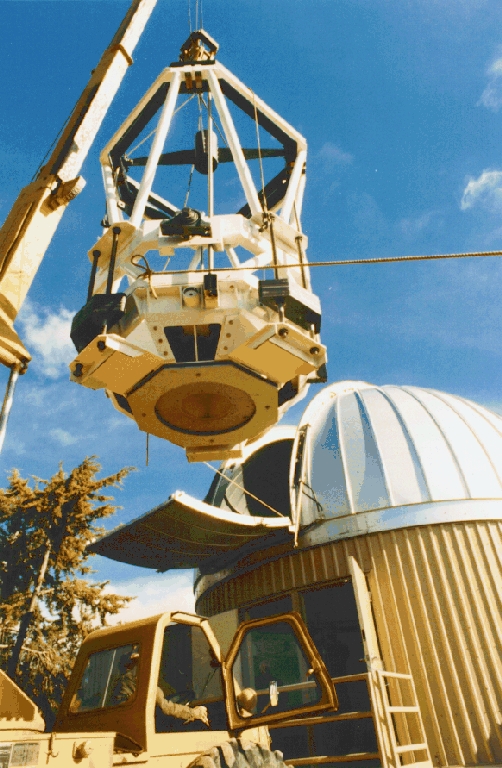 The Northern 2MASS Telescope being lifted into its dome on Mt Hopkins, AZ
on January 21, 1997. The telescope was constructed by M3 Engineering
(Tucson, AZ) under the direction of 2MASS Project Manager Rae Stiening
of the Univ. of Massachussetts. The classical cassegrain design
utilizes a 1.3 meter primary mirror that was figured by Rayleigh Optical
(Tucson, AZ).
The Northern 2MASS Telescope being lifted into its dome on Mt Hopkins, AZ
on January 21, 1997. The telescope was constructed by M3 Engineering
(Tucson, AZ) under the direction of 2MASS Project Manager Rae Stiening
of the Univ. of Massachussetts. The classical cassegrain design
utilizes a 1.3 meter primary mirror that was figured by Rayleigh Optical
(Tucson, AZ).
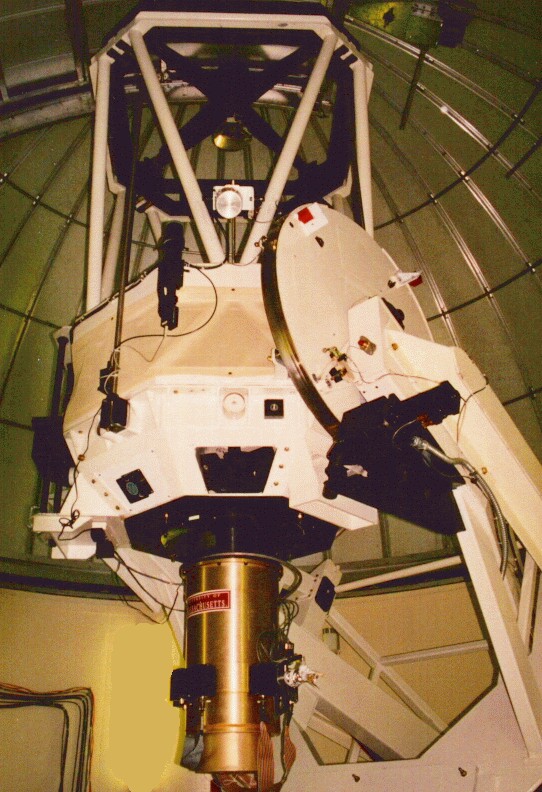
Operational Northern 2MASS Telescope on Mt Hopkins, AZ. The
gold cylinder attached to the bottom of the telescope is the
2MASS Survey Camera. The Survey Camera contains three array detectors
that image the sky simultaneously in three wavelengths of infrared
light. The camera was designed and constructed by Telic Optics
under the direction of 2MASS Principal Investigator, Dr. Michael Skrutskie
of the Univ. of Massachussetts.
II. IPAC/2MASS Atlas Images
The following images are three-color composites constructed
from 2MASS Survey Atlas Images. In each picture, J light (1.2um) is mapped
into blue, H light (1.6um) is mapped in green, and Ks light (2.2um) is
mapped into red. The Atlas Images are produced in the 2MASS Production
Processing System.
1. Images from the Milky Way
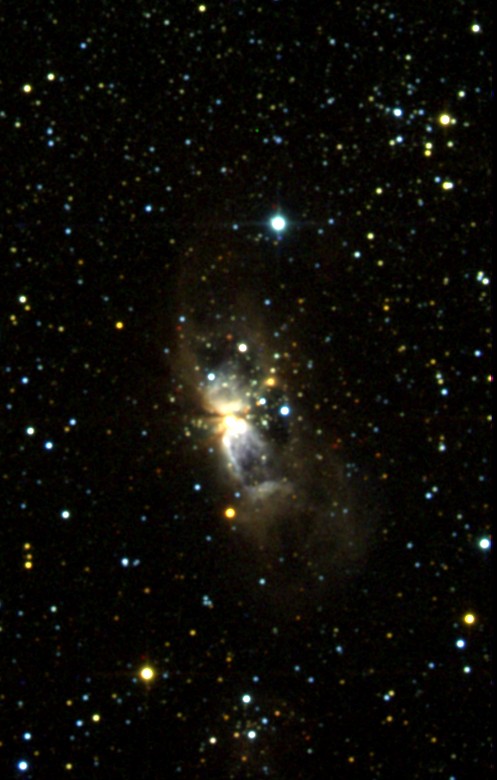
Composite JHKs 2MASS image of the massive star forming region, S106.
Hotter stars appear blue in this photo, and cool or obscured stars appear
red. Note the large number of reddish stars in the vicinity of
the nebulae. These are most likely background stars being viewed through
the veil of dust in the outer reaches of the nebula.

The 15'x35' region shown contains the S88 molecular cloud.
The bright, inverted V shaped, nebular object is S88-B, an HII
region powered by a massive star(s) embedded in the molecular cloud.
If there is a single ionizing
source for the HII region it is an O9 type star (Evans et al. 1981). The
lower level nebulosity to the west (right) of S88-B is the region S88-A
which is powered by a B0.5 type star. The molecular cloud itself prevents
light from stars further away from reaching us, so it is seen as a lack of
stars surrounding S88-A and S88-B and extending to the north of these
objects.
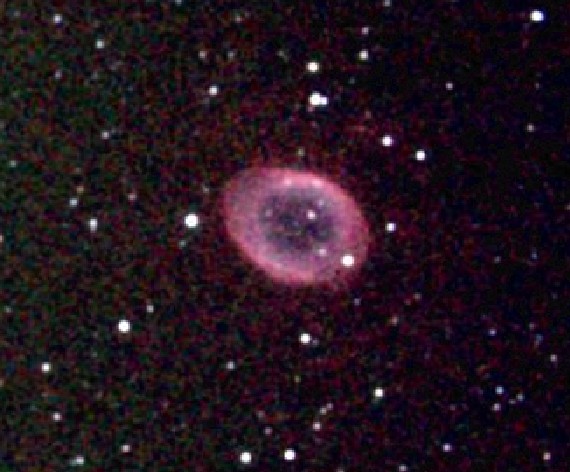
Composite JHKs 2MASS image of the planetary nebula, Messier 57 (the
"Ring Nebula"). The red color in the outer regions of the nebulae
arises from emission by atomic and molecular hydrogen in the 2 micron
wavelength band.
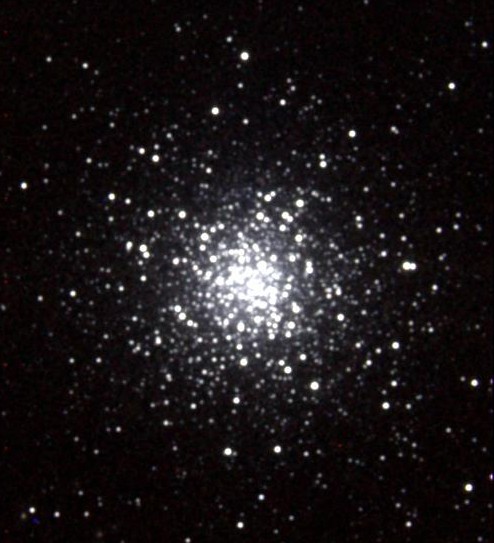
Composite JHKs 2MASS image of the globular cluster, Messier 3.
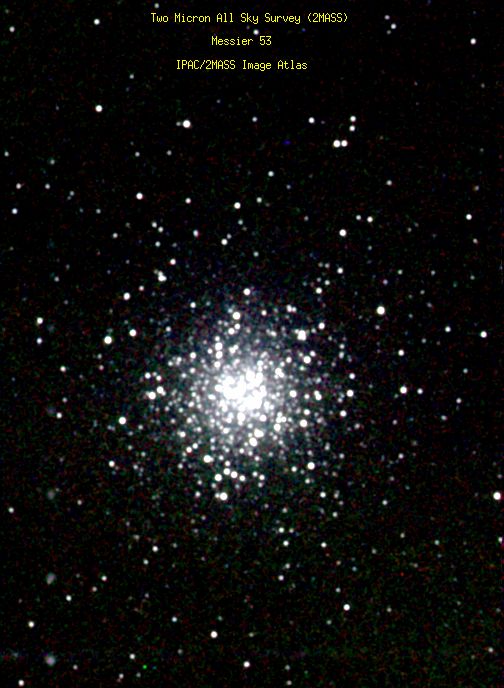
Composite JHKs 2MASS image of the globular cluster, Messier 53.
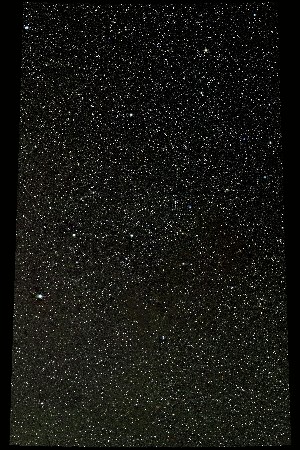
A Near Infrared View of the North American Nebula.
Composite three color image of a region in the North American Nebula from
the Two Micron All Sky Survey (2MASS). Blue colors represent 1.2um light,
green 1.6um light, and red 2.2um light. This image is
centered at 20h54m +45d and covers an area approximately 4.2x6.2 degrees.
Standard 2MASS Atlas Image data, from Mt. Hopkins, AZ, were resampled in
5 arcsecond pixels to generate this very large map.
The patches of decreased star counts scattered throughout the image are
silhouettes of molecular clouds against the backdrop of field stars in the
Galactic Plane. Observed within these clouds are several extremely red,
embedded stellar clusters surrounded by nebulosity that harbor recently
formed stars. The bright nebulosity that characterizes visible light images
of the North American nebula arises from both optical emission lines and
light reflected off dust grains in the region. Because emission lines are
generally weaker in the infrared, and dust grains do not scatter infrared
light very efficiently, the diffuse nebulosity is not visible in the 2MASS
image. 2MASS's ability to peer into molecular clouds and lower sensitivity
to diffuse emission make the survey a powerful probe of the stellar content
and structure of the Milky Way.
Mosaic image construction by E. Kopan of the Infrared Processing and
Analysis Center.
(Full Scale JPEG image 4343589 bytes)

A strip containing 30 Doradus, the massive star forming region in
the Large Magellanic Cloud. This image was obtained during the first
week of operations of the southern 2MASS facility at Cerro Tololo, Chile.

High contrast view of the Trapezium Region of the Orion Nebula.
2. External Galaxies
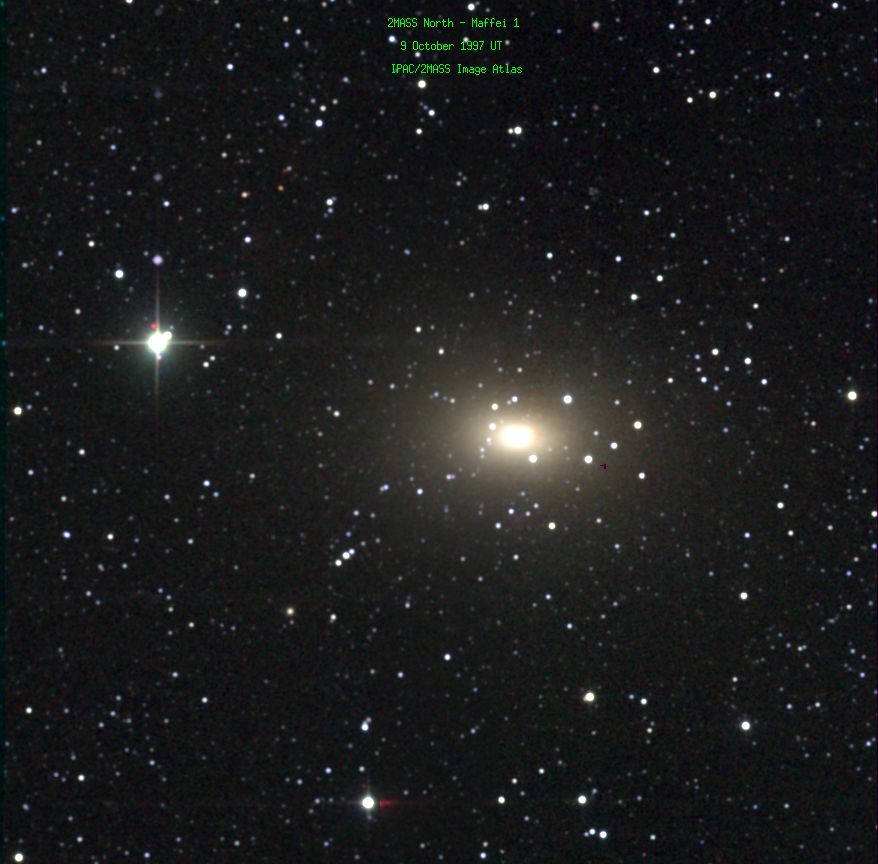
The giant elliptical galaxy Maffei 1, along with its neighbor
Maffei 2 (below), lies only about
4 million parsecs from the Milky Way (approximately 5 times as far as the
Andromeda Galaxy, M31, but in the opposite direction on the sky). However,
because they lie in the plane of the Milky Way, dust from our galaxy veils
these galaxies, rendering them almost invisible in optical
wavelengths. These 2MASS images, obtained with the northern 2MASS facility
in October of 1997, illustrate that in the near infrared
the effects of obscuring dust are greatly diminished, revealing the
true brightness and extent of our extragalactic neighbors.
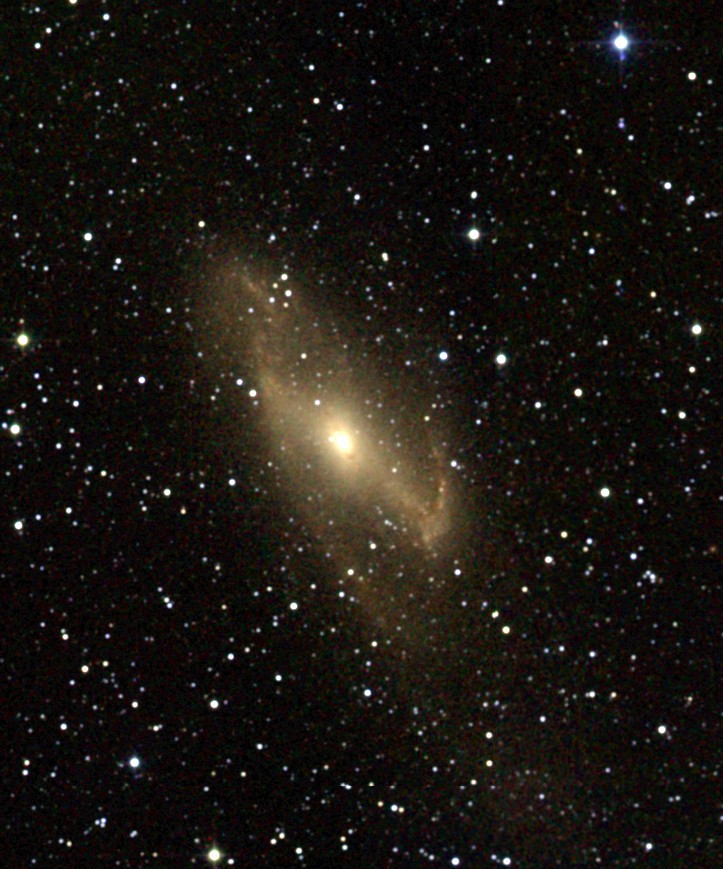
The barred spiral, starburst galaxy Maffei 2, along with its neighbor
Maffei 1 (above), lies only about
4 million parsecs from the Milky Way (approximately 5 times as far as the
Andromeda Galaxy, M31, but in the opposite direction on the sky). However,
because they lie in the plane of the Milky Way, dust from our galaxy veils
these galaxies, rendering them almost invisible in optical
wavelengths. These 2MASS images, obtained with the northern 2MASS facility
in October of 1997, illustrate that in the near infrared
the effects of obscuring dust are greatly diminished, revealing the
true brightness and extent of our extragalactic neighbors.
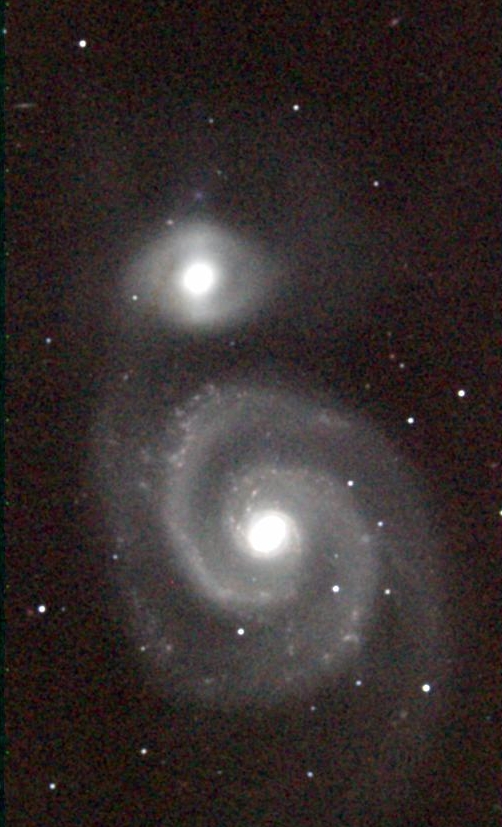
The spiral galaxy Messier 51 (the "Whirlpool Galaxy"), and its
companion, NGC 5195. These two galaxies are nearly 28 million light
years from the Milky Way. This image was acquired by the Northern 2MASS
Facility running in normal survey scanning mode on 18 April 1997 UT, the
first night of operation. 2MASS is most sensitive to light that originates
from the smoothly distributed, relatively old stars in galaxies
like M51. However, sites of active formation of massive stars can also
be seen as the knots in the spiral arms and around the nucleus of the galaxy.
Note that the companion galaxy does not have star forming regions
in its disk.
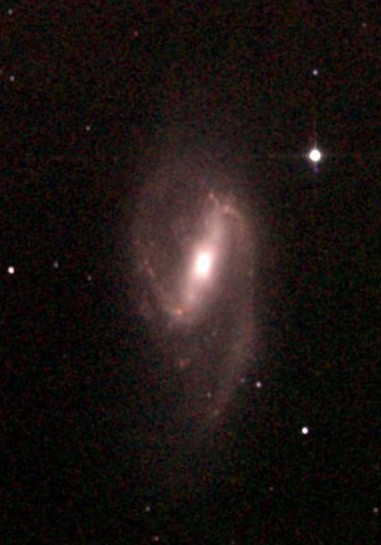
The barred spiral galaxy, Messier 66. The red condensations
seen along the spiral arms in this galaxies are sites of active star
formation. The red color arises because of intense emission from
excited atomic hydrogen at a wavelength of 2 microns in these regions.
The prominent star forming regions seens at the ends of the bar in this
galaxy are not apparent in visible light images.
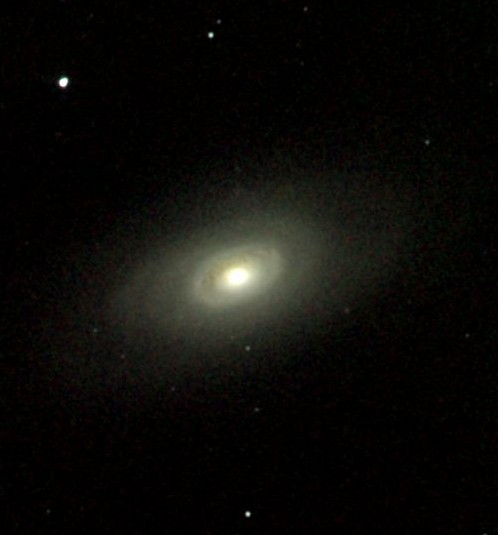
The spiral galaxy Messier 64. The reddish arc above the
nucleus of this galaxy is caused by a ring of dust that obscures the light
from the underlying stars.
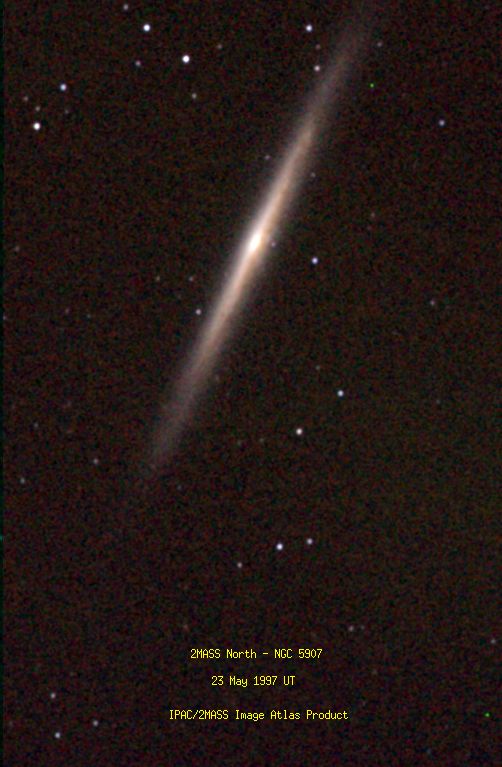
The edge-on spiral galaxy NGC 5907. Notice the red dust lane
produced by the disk of this galaxy.
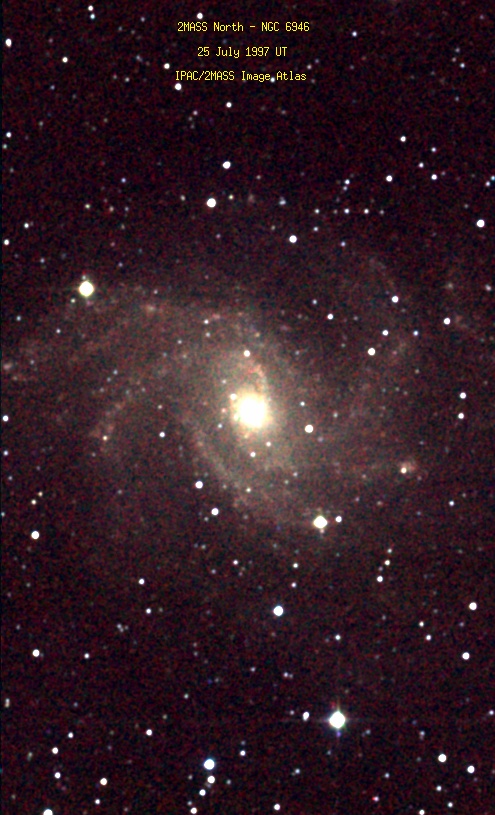
The nuclear starburst galaxy NGC 6946. Note the numerous red HII
regions around the nucleus and within the spiral arms of this galaxy.
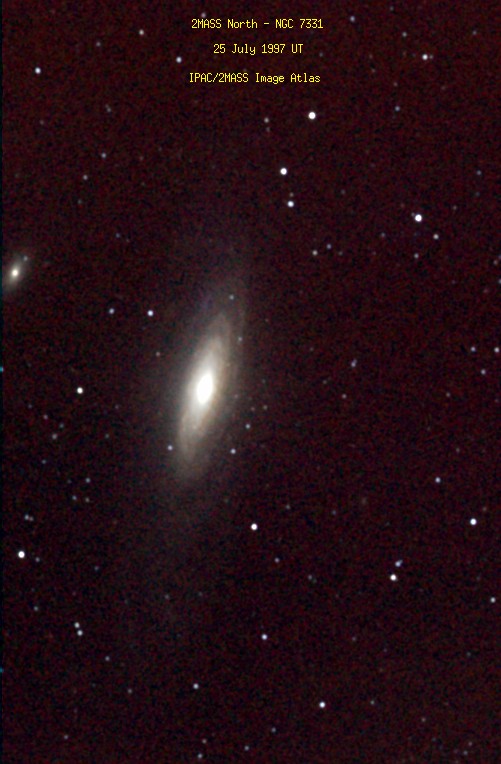
The spiral galaxy NGC 7331. Note the red, dusty arc to the right
of the nucleus of this galaxy.
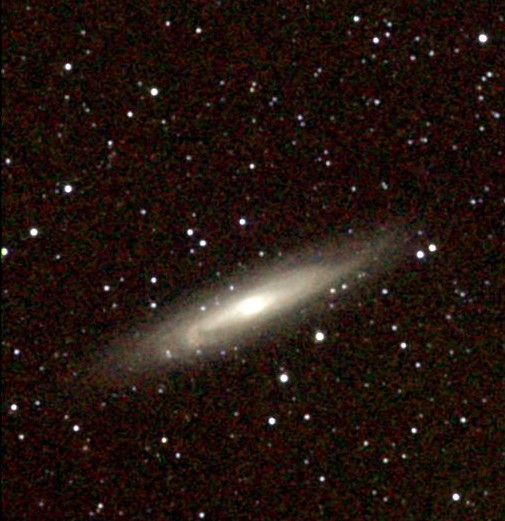 The spiral galaxy NGC 2613. Image obtained during the first
night of operations for the southern 2MASS facility on Cerro Tololo, Chile.
The spiral galaxy NGC 2613. Image obtained during the first
night of operations for the southern 2MASS facility on Cerro Tololo, Chile.
Last Update 3 April 1998
R. Cutri - IPAC
 Composite picture showing the Northern 2MASS Telescope being lifted
into its dome on Mt. Hopkins (upper left), three-color image
of the planetary nebular M57, the "Ring", taken on the first night of 2MASS
operations
(upper right), and Northern Telescope ready for operation at
sunset on Mt. Hopkins (bottom).
Composite picture showing the Northern 2MASS Telescope being lifted
into its dome on Mt. Hopkins (upper left), three-color image
of the planetary nebular M57, the "Ring", taken on the first night of 2MASS
operations
(upper right), and Northern Telescope ready for operation at
sunset on Mt. Hopkins (bottom).
 The Northern 2MASS Telescope being lifted into its dome on Mt Hopkins, AZ
on January 21, 1997. The telescope was constructed by M3 Engineering
(Tucson, AZ) under the direction of 2MASS Project Manager Rae Stiening
of the Univ. of Massachussetts. The classical cassegrain design
utilizes a 1.3 meter primary mirror that was figured by Rayleigh Optical
(Tucson, AZ).
The Northern 2MASS Telescope being lifted into its dome on Mt Hopkins, AZ
on January 21, 1997. The telescope was constructed by M3 Engineering
(Tucson, AZ) under the direction of 2MASS Project Manager Rae Stiening
of the Univ. of Massachussetts. The classical cassegrain design
utilizes a 1.3 meter primary mirror that was figured by Rayleigh Optical
(Tucson, AZ).

















